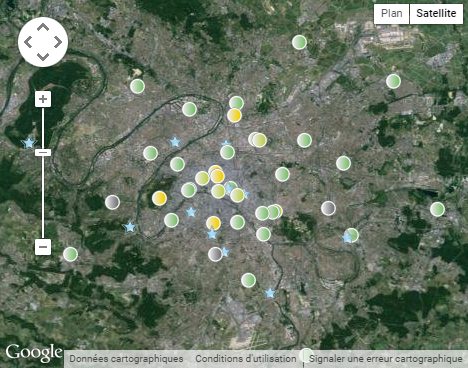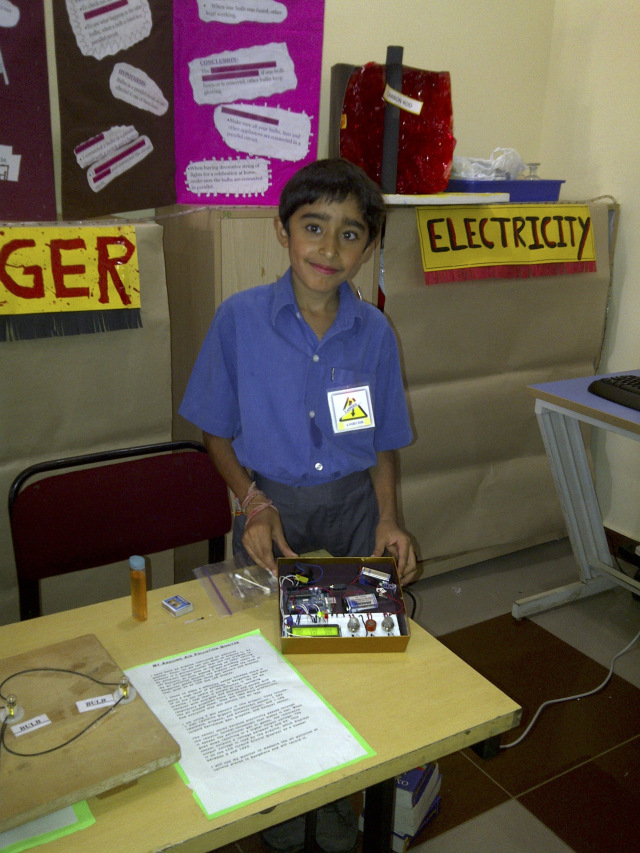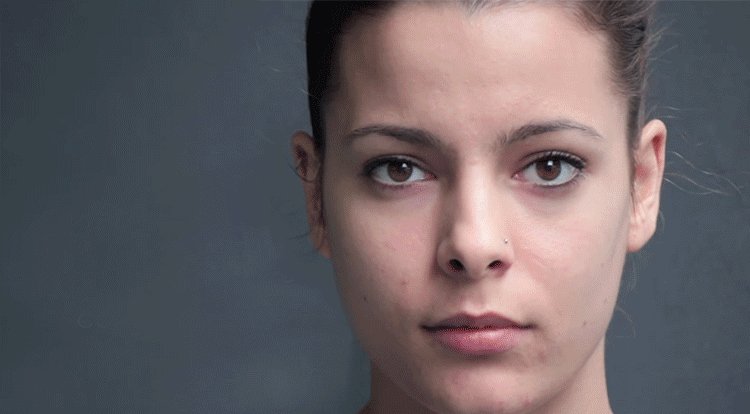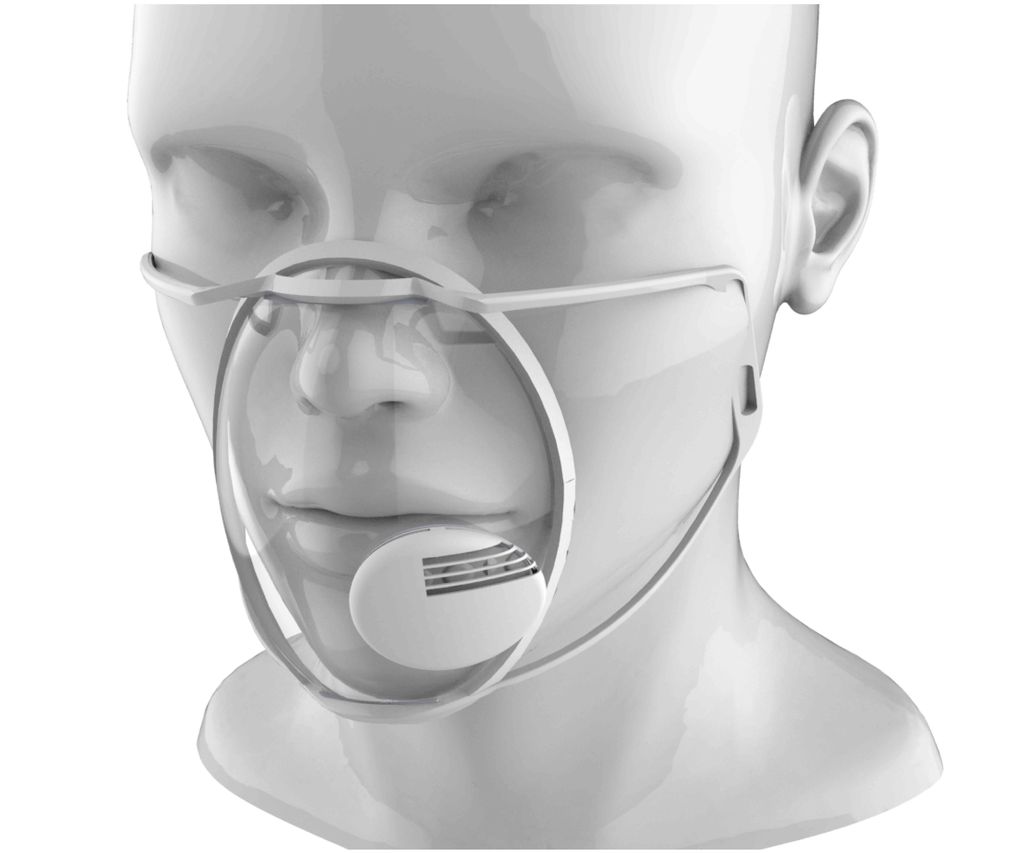DIY: fine particles filtered by tutorials?
Published 14 April 2015 by Quentin Chevrier
From early spring, Paris and several large cities proud of their network of shared bicycles were facing pollution alerts. For want of being able to hold your breath, can you DIY an effective protection?
What is pollution?
Carbon dioxide, more or less fine particles, ozone, nitrogen oxide…even though you’re spoilt for choice, the recent Parisian alerts and also those from Grenoble essentially related to fine particles (with a size of 2.5µm and below, i.e. about 1/30th of human hair) and compelled you to limit the use of the less polluting means of transport…the bicycle. The height of absurdity.
Home made sensors
Some large urban areas have one or more measurement networks (Plumelabs or Air Parif for the Ile-de-France region). The coverage of these networks is very loose whereas the concentration levels of pollutant can vary from one street to the next, from one district to the next. So how does one get to know the pollution of one’s direct environment?

The online search for air pollution sensors for concerned makers is rather disappointing. The most affordable sensors concentrate on gases: ozone, carbon dioxide and monoxide, methane, butane, alcohol vapours…with results that are not very precise, especially for measuring relatively low quantities. A decent CO2 sensor costs a minimum of one hundred euros. Although a fine particle pollution sensor at 15 dollars does exist, informed testers considered its measures to be long, not very reliable, and very noisy.
In Doha, Qatar, DohaDust.org is based on this sensor. Even though the measurement does not have a scientific precision, the initiative of Alex Johnson, American expatriate in Qatar, takes credit for giving the example: since the city does not measure pollution, Alex did it, makes the information public and shares the directions for assembly of his measurement device.
Alex Johnson’s tutorial to build your connected measurement station
A young maker improves fine particle sensors
Also tired of only being able to count on 4 measurement stations, regularly out of order, for the whole city of Bangalore, the young creator of the India Air Quality website designed his first pollution sensor aged 10. An opportunity to start with an Arduino, and quickly understand the limits of his first prototype.

By dint of research, prototypes, as well as encounters with the engineers of the measurement station supplier of California, where he moved, the young maker eventually improved on his own the general public sensors of Los Altos. By replacing certain components and rethinking the air circulation in the sensor, he drastically improved the reliability of sensors, and started to think of a distributed system of DIY measurement stations. Meanwhile, his twitter account automatically publishes every hour the fine particle concentration on his windowsill
Once the danger is spotted, how does one protect oneself?
Let’s avoid suspense: no usable home remedy exists to protect yourself from fine particles on a bicycle, on foot or on horseback. Fabric masks, scarfs on noses, wet cloths…block nothing else than your natural defences (i.e. nasal hair). It’s better than nothing, but nothing against fine particles.
Although makers like to get hold of societal challenges (agriculture, health, handicap…), DIY solutions for anti-pollution masks cannot be found at the moment. Except if you consider that the scuba tank is a solution (found on a health forum)…The idea of cycling with tens of kilos on your back, having compressed pure air in the tanks, does not appear that relevant…
Even without going the DIY way, protection masks for cyclists are not the panacea. The most widespread mask on the market, the sport model of the British brand Respro, does not filter all the particles. According to users, it is particularly uncomfortable. It hurts, isolates users in their end-of-day breath, submerges them with its own condensation… Apparently, breathing 60 litres of air per minute (volume used on average during a physical effort) through an active charcoal filter and an electrostatic filter is suffocating. Yet it is the most complete filtering solution at present.

3D printing to the rescue?
Last problem, these protection masks are sold in three sizes (small, medium and large). Inexorably, masks do not mould faces perfectly. Air leaks are created. During an effort, the user is breathing deeply, forcing the passage of air, and fine and less fine particles pass through these gaps.
Two Americans, Josh Reed, industrial designer, and Leandro Rolon, architect, are exploring the trail of 3D printing to solve the problem. Common to orthopaedic insoles, the idea is to scan and model the face of each user to then print a mask made of soft plastic, with optimised volume and shape.

We would have liked to have given you more solutions and trails to live with pollution peaks. Unless one of these solutions has eluded us, it does seems that the maker movement has found a true challenge there. Will you know how to face it?
